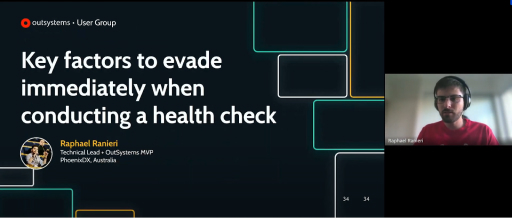Conducting a health check on your applications, especially when preparing to transition from O11 to ODC, demands a keen eye for potential pitfalls. In this article, we’ll delve into six critical factors to avoid during this process, ensuring a smooth and successful migration while maintaining the integrity of your systems.

1. Monolithic Apps:
With ODC moving away from the modular approach of O11, it’s tempting to consolidate your applications into monolithic structures. However, this is a pitfall to avoid. Maintaining the architecture canvas and organising apps into distinct layers ensures a smoother transition and better scalability.
2. Highly Coupled Architectures:
Applications interact primarily through REST APIs in ODC. To ease the transition, avoid tightly coupled architectures in O11 and implement domain-driven design principles to decouple components, making migration to ODC more straightforward.
3. SOAP Integrations:
While ODC supports SOAP integrations, they come with added complexities. Consider migrating to REST APIs for smoother integration. Plan and explore alternative protocols to avoid unnecessary complications in the migration process.
4. Database Stack Differences:
ODC standardises on AWS Aurora for database management, diverging from the database options available in O11. Identify and adapt any SQL queries or database interactions early to accommodate the differences in syntax and functionality.
5. Extension Dependencies:
In ODC, extensions are deployed separately from applications, requiring REST APIs for communication. Prepare to refactor extensions that rely heavily on direct object references or environment variables, as these dependencies may no longer be supported in the new architecture.
6. Core Widget Dependencies:
The shift from O11 to ODC introduces limitations on core widget usage, particularly regarding database interactions. Prioritise separating UI and business logic in libraries and utilise event-driven communication to interact with databases, minimising dependencies on core widgets.
By avoiding these key pitfalls, organisations can streamline the migration process and ensure a robust foundation for future development on the ODC platform.
In Conclusion:
Navigating the transition from O11 to ODC requires a proactive approach to identifying and mitigating potential challenges. By avoiding monolithic architectures, tightly coupled systems, legacy integrations, database stack differences, extension dependencies, and core widget limitations, organisations can safeguard their applications and ensure a successful migration.
Remember, preparation and foresight are paramount when conducting a health check in preparation for platform migration. Stay vigilant, adapt proactively, and embrace the opportunities presented by the evolution of your application ecosystem.
This content was initially part of an Australia East Coast OutSystems User Group presentation titled Swift Shift: Effective Strategies for O11 to ODC Transition.





